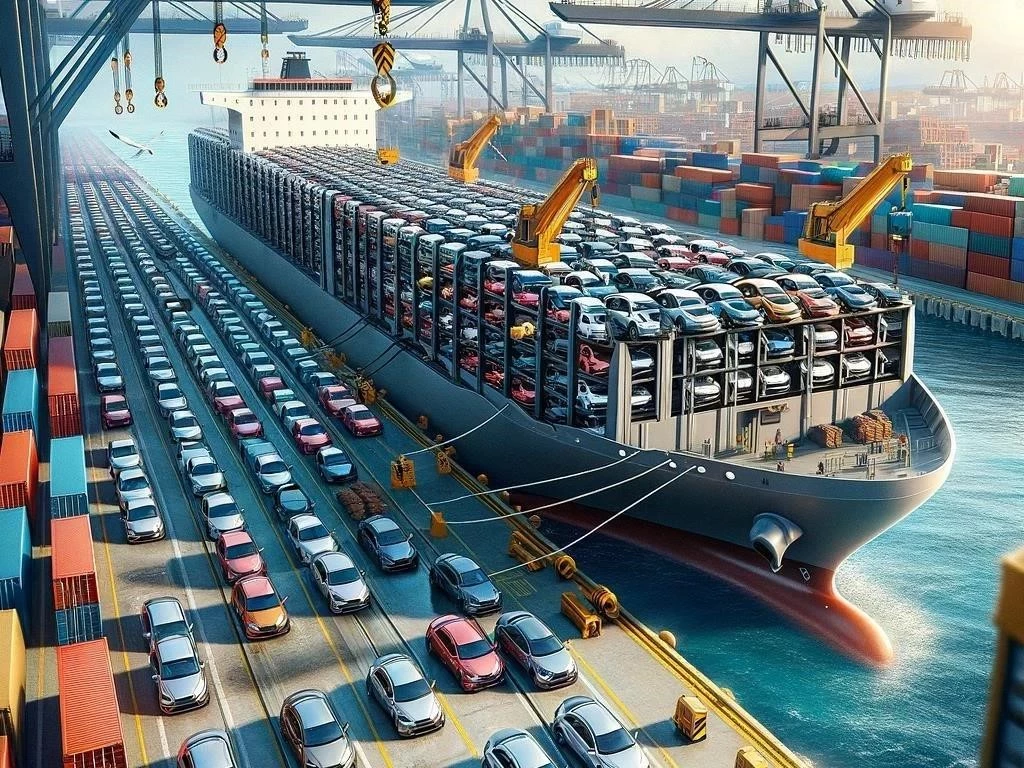How Are Cars Shipped from Overseas
Shipping cars from overseas involves meticulous planning, utilizing various shipping methods, ensuring compliance with export regulations, and coordinating logistics for efficient vehicle delivery to the destination while managing customs clearance and import duties.
Automobile transport encompasses the entire process of moving vehicles from one location to another, particularly when it involves international shipping. This complex operation requires a comprehensive understanding of logistics, regulations, and various shipping methods. Shipping a car overseas involves multiple steps, including selecting the appropriate freight forwarding services and understanding the requirements for car imports. The process begins with choosing the right mode of transport, such as maritime transport, which is crucial for overseas vehicle transport. Moreover, understanding the significance of customs clearance is vital, as it ensures compliance with import duties and export regulations. The automobile transport industry has evolved, offering advanced auto shipping services that facilitate seamless vehicle delivery. Additionally, tracking shipments has become increasingly important, allowing customers to monitor their vehicles during transit. Effective supply chain management is essential, as it coordinates all aspects of the shipping process, from container shipping to the final delivery at port facilities. Ultimately, successful automobile transport hinges on attention to detail and adherence to regulations.
Overview of Shipping Methods for Vehicles
When it comes to shipping vehicles overseas, there are primarily two dominant methods: container shipping and roll-on/roll-off (RoRo) transport. Container shipping involves placing vehicles inside shipping containers, offering protection from the elements and potential damage during transit. This method allows for secure stacking and transport of several vehicles simultaneously, making it an excellent choice for those shipping multiple cars or valuable automobiles. Additionally, container shipping provides flexibility, as it accommodates various vehicle types, including cars, trucks, and motorcycles. Conversely, roll-on/roll-off (RoRo) transport is a more straightforward approach where vehicles are driven directly onto a specialized vessel. This method is generally faster and more cost-effective, particularly for standard cars, as it eliminates the need for loading into containers. However, RoRo does expose vehicles to environmental conditions during transit. Each shipping method has its advantages and disadvantages, making it essential for vehicle owners to consider factors such as cost, time, and vehicle value when selecting the best option for their needs;
Role of Freight Forwarding in Car Import
Freight forwarding plays a crucial role in the car import process, serving as the intermediary between vehicle owners and shipping companies. These specialized services manage the logistics involved in transporting vehicles from their origin to the destination port. Freight forwarders ensure that all necessary documentation is completed, including bills of lading, customs declarations, and import permits. Their expertise in navigating complex export regulations helps streamline the shipping process, saving time and reducing potential delays. Additionally, freight forwarders coordinate the various aspects of automobile transport, such as container shipping or roll-on/roll-off methods, to align with the client’s needs. They also provide valuable insights regarding insurance options, ensuring that vehicles are protected during transit; Moreover, freight forwarding services assist with customs clearance, facilitating the payment of import duties and ensuring compliance with local regulations. By leveraging their extensive network and industry knowledge, freight forwarders enhance the efficiency and reliability of overseas vehicle transport, making them indispensable partners in the car import journey.
Container Shipping vs. Roll-on/Roll-off
When considering how cars are shipped from overseas, it’s essential to understand the differences between container shipping and roll-on/roll-off (RoRo) methods. Container shipping involves placing vehicles inside a shipping container, offering superior protection against harsh weather conditions and potential damage during transit. This method is particularly beneficial for high-value or classic cars, as it minimizes exposure to external elements. Additionally, container shipping allows for the transport of multiple vehicles in one shipment, optimizing space and efficiency. However, this method can be more expensive compared to RoRo. On the other hand, RoRo transport is a simpler and often quicker option where vehicles are driven directly onto a specialized vessel. This method is generally more cost-effective and suitable for standard vehicles, as it eliminates the need for containers. However, RoRo exposes cars to environmental elements during transit, which may not be ideal for every vehicle type. Ultimately, the choice between these shipping methods should be based on factors such as budget, vehicle type, and desired level of protection during transport.
Customs Clearance and Import Duties
Customs clearance is a critical step in the process of shipping cars from overseas, ensuring that all legal requirements are met before a vehicle can enter a new country. This process involves submitting various documentation, including the bill of lading, proof of ownership, and any necessary import permits. Compliance with local import regulations is essential, as failure to meet these requirements can lead to delays or additional costs. Import duties, which are taxes imposed on imported vehicles, must also be calculated and paid during this stage. The amount of these duties varies depending on the country of origin, vehicle type, and value. Working with experienced freight forwarders can simplify the customs clearance process, as they are familiar with the regulations and requirements specific to different countries. Moreover, they can provide guidance on potential exemptions or reductions in import duties based on the car’s age or classification. Properly navigating customs clearance and understanding import duties are vital components of a successful overseas vehicle transport experience, ensuring a smooth transition to the destination.
Logistics and Tracking Shipments
Logistics plays a pivotal role in the effective shipping of cars from overseas, encompassing the planning, execution, and management of the entire transportation process. This includes coordinating various shipping methods, managing schedules, and ensuring that vehicles are delivered safely and on time. Proper logistics management involves collaboration among multiple stakeholders, including freight forwarders, shipping companies, and customs agents, to optimize the supply chain. Additionally, tracking shipments is a vital component of the logistics process, providing real-time updates on a vehicle’s location and status during transit. Advanced tracking systems utilize GPS technology and online platforms, allowing vehicle owners to monitor their shipments closely. This transparency enhances customer confidence, as they can stay informed about the progress of their vehicle delivery. Furthermore, efficient logistics and tracking systems help identify potential issues before they escalate, allowing for timely solutions. By prioritizing logistics management and tracking capabilities, businesses can improve the overall shipping experience, ensuring that vehicles arrive at their destination securely and efficiently while minimizing delays or complications.
Navigating the process of overseas vehicle transport requires careful planning and a thorough understanding of various elements involved in shipping cars. From selecting the appropriate shipping method to ensuring compliance with customs regulations, each step is crucial for a successful import experience. Understanding the differences between container shipping and roll-on/roll-off methods can help vehicle owners make informed decisions based on their specific needs, whether prioritizing protection or cost-effectiveness. The role of freight forwarding is indispensable as these professionals streamline logistics, manage documentation, and facilitate customs clearance, thus enhancing overall efficiency. Moreover, staying informed about import duties and regulations helps prevent unexpected costs and delays. Effective tracking systems further contribute to a seamless shipping experience, allowing owners to monitor their vehicles in real-time. Ultimately, successful overseas vehicle transport hinges on collaboration among all stakeholders involved and leveraging expert knowledge in logistics and customs processes. By prioritizing these factors, individuals can confidently navigate the complexities of shipping cars from overseas, ensuring a smooth transition from one destination to another.








